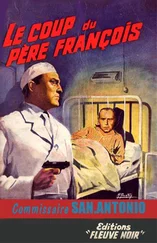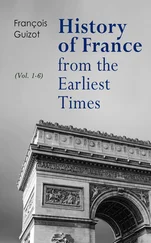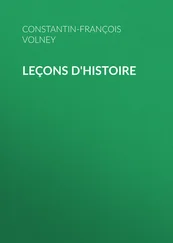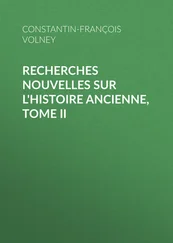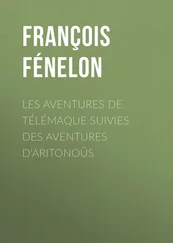François Dominique - Aseroë
Здесь есть возможность читать онлайн «François Dominique - Aseroë» весь текст электронной книги совершенно бесплатно (целиком полную версию без сокращений). В некоторых случаях можно слушать аудио, скачать через торрент в формате fb2 и присутствует краткое содержание. Город: New York, Год выпуска: 2020, ISBN: 2020, Издательство: Bellevue Literary Press, Жанр: Современная проза, на английском языке. Описание произведения, (предисловие) а так же отзывы посетителей доступны на портале библиотеки ЛибКат.
- Название:Aseroë
- Автор:
- Издательство:Bellevue Literary Press
- Жанр:
- Год:2020
- Город:New York
- ISBN:978-1-942658-78-8
- Рейтинг книги:5 / 5. Голосов: 1
-
Избранное:Добавить в избранное
- Отзывы:
-
Ваша оценка:
- 100
- 1
- 2
- 3
- 4
- 5
Aseroë: краткое содержание, описание и аннотация
Предлагаем к чтению аннотацию, описание, краткое содержание или предисловие (зависит от того, что написал сам автор книги «Aseroë»). Если вы не нашли необходимую информацию о книге — напишите в комментариях, мы постараемся отыскать её.
Aseroë — читать онлайн бесплатно полную книгу (весь текст) целиком
Ниже представлен текст книги, разбитый по страницам. Система сохранения места последней прочитанной страницы, позволяет с удобством читать онлайн бесплатно книгу «Aseroë», без необходимости каждый раз заново искать на чём Вы остановились. Поставьте закладку, и сможете в любой момент перейти на страницу, на которой закончили чтение.
Интервал:
Закладка:
6

Aseroë
AFTER A WEEK’S WORK in Budapest in November, I decided to spend my Sunday at the National Museum. The next morning, in Szentendre, on the Danube, I was to meet the painter Endre Bálint; he was going to show me the façades of the old houses featuring the “Serbian motifs” of which I was ignorant while looking at his drawings several days earlier.
The trip to the museum was painful. I was asleep on my feet. The paintings were running in a blur before me; I had to make an effort to distinguish one from another. My week’s work, which was quite interesting and proceeding at a regular pace, didn’t explain my fatigue. I was afraid I might be falling ill, but I had no shivers, no discomfort—just a strong urge to sleep. All these rows of paintings seemed unbearable to me: bloodless nudes, idiotic portraits, nauseating crucifixions, ponderous battles. The visitors seemed to be accomplices in all this. How could I put up with their murmurs, their admiring commentaries? I was afraid some annoying person might notice my deplorable condition and denounce me as a spy. I immediately made up my mind: I would walk through the galleries at a swift clip.
I was moving along quickly from gallery to gallery, going against the direction of the tour. I raced through several centuries—the Italian Primitives, Spain, Flanders, the Renaissance, and the Baroque—a few seconds for each period and country, nothing more.
Since the rooms were well heated, I began to feel reinvigorated. Several times I passed in front of the same canvases. “No point in lingering,” I told myself toward the end of the morning tour, impatiently waiting to be hungry enough to make my exit with a good excuse.

A little later, I was stopped dead in my tracks in front of Caterina Cornaro , by Gentile Bellini. “Stopped dead in my tracks” is the right expression to describe my condition—for almost the last two hours, any sense of “culture” had been lost on me. Seized by sudden delight, I spontaneously discovered a face—with whose eyes, whose hair, and whose Venetian coif I fell instantly in love.
Talented, elegant, and flattering as the painter’s treatment may have been, it wasn’t the beauty of the face that captivated me but the sparkle of her look, the intense emotion that animated her. Resisting too hasty an infatuation, I took the time to examine all the details. I observed her forehead, her mouth; I roved lovingly over her hair, her eyes, her cheeks. It was as if her material surface were troubled by the loving caress of my gaze. This idea seemed to please the painting, and its face smiled back at me. I immediately assumed that I was the victim of some visual disorder or the effects of a fatigue too recent to be entirely overcome. I wanted to clarify the situation, and, holding my breath, I approached the portrait. The actual canvas of the painting, now so close to my eyes, became even more disturbing. Who was I to accuse, down to the last detail, the clumsiness of Gentile Bellini, who had left all the vestiges of his numerous pentimenti so poorly covered up? Had the artist interrupted his progress at several points of his painting, leaving it at the sketch stage, neglecting numerous delicate nuances, botching the finished work? Or rather, did every flutter of his brushstroke anticipate that fashionably négligé manner that would later become so common in the art of the portrait?
I feared the worst: despairing of finding the overall truth of a face, had the painter simply attacked its individual features, drowning his finest touches under a poor glaze, thickening the color where he should have instead lightened it? No, the portrait was irreproachable: you just fell in love with it the moment you saw it.
The painted surface came to life before me. It made me think of those faces that sleep with their eyes open: they’re motionless, but you have no doubt that they’re alive. These sleeping beauties never gaze at their onlookers, but this Venetian woman by Bellini was staring at me intently. One would have to find the source of movement, however slight, that justified this illusion. The painting was immobile, and my glance was not distracted. I imagined that there must have been some phenomenon in the air—between my face and this painted face—some change in the atmosphere, some alteration of the light, to which I had failed to pay sufficient attention.
I moved this way and that in front of Caterina Cornaro . I observed the other canvases as well (with their perfectly inert faces, their formal beauties), but again and again I returned to Caterina Cornaro . The flesh coloring of her face remained ever vivid—a striking anomaly that at once called out to me and made me afraid. Meanwhile, I vehemently rejected any notion that I was here encountering a real woman in the flesh: I preferred the sensible inertia of an image completely divorced from its deceased model, the expected absence of a being whom I would never come to know. In an ancient portrait such as this—quite the reverse of an image glimpsed in a mirror—is not the evocation of a woman supposed to be an image frozen in time?
I leaned forward once more. My gaze sought out the eyes in the painting and met them, lost in anticipation—a summons that refused to die out. “Your painted face clouds over the moment I look at you, yet your eyes are begging for life.” These were words I whispered to the painting, but what did they mean? There was a subtle exchange between us. “Your gaze is insisting on the life it lacks.” I concluded: Yes, it’s as if she were begging me, and I closed my eyes, utterly in love.

Deprived of a model for several centuries, the figure in the painting was crying out for a live woman. The relationship between face and portrait had in this case been reversed. Time itself, like some inept god, had been annulled. “Caterina!” she was saying, “Let your face come forth; let it agree to correspond to mine feature by feature!” A crazy request, which I was at a loss to answer, but which I sensed as I stood before her. I addressed the portrait in person. A voice rang out in the silence of the gallery, filled with joy and anguish. It was not my own.
Later, I turned around. The visitors were passing by Caterina Cornaro . Nobody was looking in my direction. They didn’t know that a painting was in the process of awakening, engaged in a freakish argument with time. The ancient gaze was calling out to me. But it was not entirely aimed at me. Instead, it stared right through me and sought out a woman—the model who was yet to come and who would at last appease the portrait by finally offering up its lost resemblance to it.
Feeling like a rejected lover, my eyes left her face to wander over the patrician interior of the museum, inspecting its furnishings, its wall hangings, its dimmed bedrooms—the prison space that kept the deceased Caterina from stepping out of her frame and rejoining me in the here and now.
Then I turned away from her portrait. On the wall facing it were windows opening onto a lighted space. I made my way out onto the cold street, just barely tinged by the November air, and headed for Kálvin Tér.
Unable to focus my attention, I walked around for a long time. The painted face wouldn’t leave me alone. I tried to act decisively, but went on one fool’s errand after another. At one point, I bought some Serbian and Bulgarian periodicals, although I didn’t know a word of either language. In another place, I bought a pocket mirror I would never use. Several times I took the same bus in both directions—the number nine, from Kálvin Tér to Déak Tér, from Déak Tér to Kálvin Tér. I was humiliated by the painting; I needed to find a life that was less haunted, a life made up of ordinary things. Finally I got back to my hotel and went to bed without dinner, exhausted by my errancy and the endless stream of cars.
Читать дальшеИнтервал:
Закладка:
Похожие книги на «Aseroë»
Представляем Вашему вниманию похожие книги на «Aseroë» списком для выбора. Мы отобрали схожую по названию и смыслу литературу в надежде предоставить читателям больше вариантов отыскать новые, интересные, ещё непрочитанные произведения.
Обсуждение, отзывы о книге «Aseroë» и просто собственные мнения читателей. Оставьте ваши комментарии, напишите, что Вы думаете о произведении, его смысле или главных героях. Укажите что конкретно понравилось, а что нет, и почему Вы так считаете.



